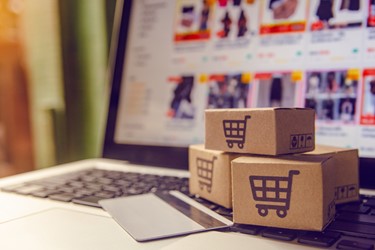How Local Payment Methods Are Helping Fuel Latin America's e-Commerce Boom
By Steve Villegas, VP of Payments Partnerships, PPRO

One glimmer of good news for the economies of Latin America (LATAM) during the COVID-19 pandemic is the incredible boost in e-commerce. According to eMarketer Insider Intelligence, LATAM saw the world’s greatest e-commerce growth in 2020, taking first position ahead of Asia-Pacific.
While the growth in 2020 may have been driven by lockdowns and social distancing, it’s an indication of what’s to come in a new digital-first era. Increasing and customizing local payment methods for e-commerce could accelerate growth for Latin American economies even faster.
To see what we mean by local payment methods (LPMs), let’s explore the region’s dynamic payments landscape.
Buy Global. Pay Local.
Aside from cash vouchers, local credit card schemes are one of the dominant forms of payment across LATAM. Local cards make up 58% of all online transactions in LATAM. These credit cards such as Elo or Hipercard – or even locally issued MasterCard and Visa cards – are tied to local and regional financial networks and cannot be used to make payments on international websites or anywhere outside their home country.
Other LPMs are built around installment payments. In LATAM, this option requires the customer to have the total price of their purchase available within their credit card limit, yet the merchant agrees to charge the card in installments.
LATAM Buy Now Pay Later methods are an arrangement between the consumer and the merchant; in effect, a cash payment over time. By contrast, in the U.S., systems like Klarna and Afterpay fund the transaction, and the consumer makes monthly installments to the service: in effect, a loan.
Installment payments are a familiar and popular way for LATAM consumers to pay, even for small purchases. As evidence, 60% of e-commerce purchases are paid for using an installment plan according to EBANX.
Another LPM being used for e-commerce is OXXO in Mexico. OXXO is a voucher-payment option that leverages the ubiquity of 21,000+ OXXO convenience stores, enabling unbanked and security-conscious consumers to fund online purchases.
In Argentina, Rapipago and Pago Fácil enable offline payments for online purchases through their extensive network of physical locations.
Future. Proof.
The growing demand for digital purchases and peer-to-peer payments is driving the creation of new LPMs to enable instant processing. For example, Brazil’s PIX was created by the Central Bank of Brazil to enable instant payments in real-time, 24-7, without requiring debit, credit cards, or a bank account. In trials since 2019, the system formally launched in November of 2020 with participation by 980 financial institutions, 20 million users forecast for its first year and reduced transaction costs between 10 - 40 percent. This is seen as a major accelerant for commerce of all kinds.
As with all aspects of culture, financial behavior is shaped by the habits and preferences of the local population. Providers that host LPM infrastructure can enable online transactions in familiar ways that further fuel that channel. By satisfying these niche, local consumer needs, LPMs also dovetail with the global trend toward greater personalization of the online shopping experience.
As local payment methods are adapted to e-commerce -- enabling transactions across a range of methods on a single payments platform -- LATAM consumers will gain greater access to global goods and services. With LPMs designed to meet niche, local consumer needs, demand will only heighten as personalization continues to drive today’s lifestyle. The more ways there are to pay, the greater business can accelerate: LPMs are the engine of future economic growth.
